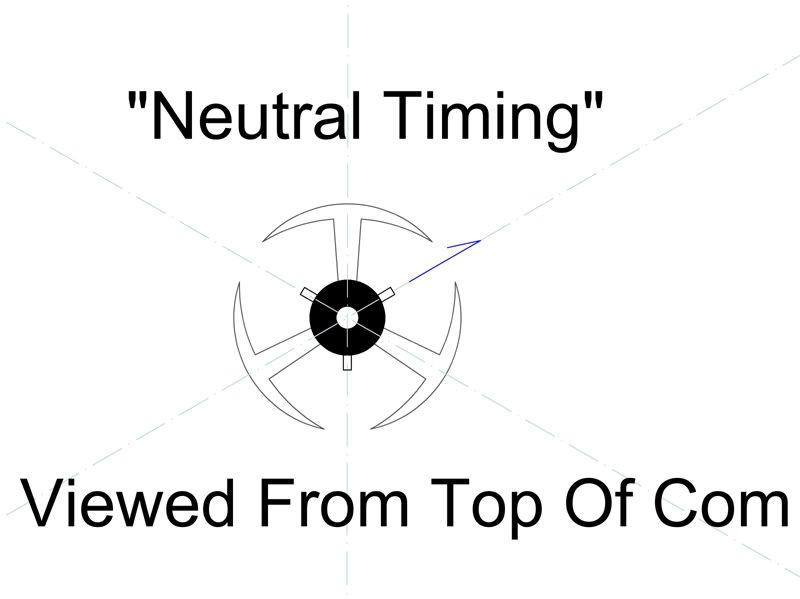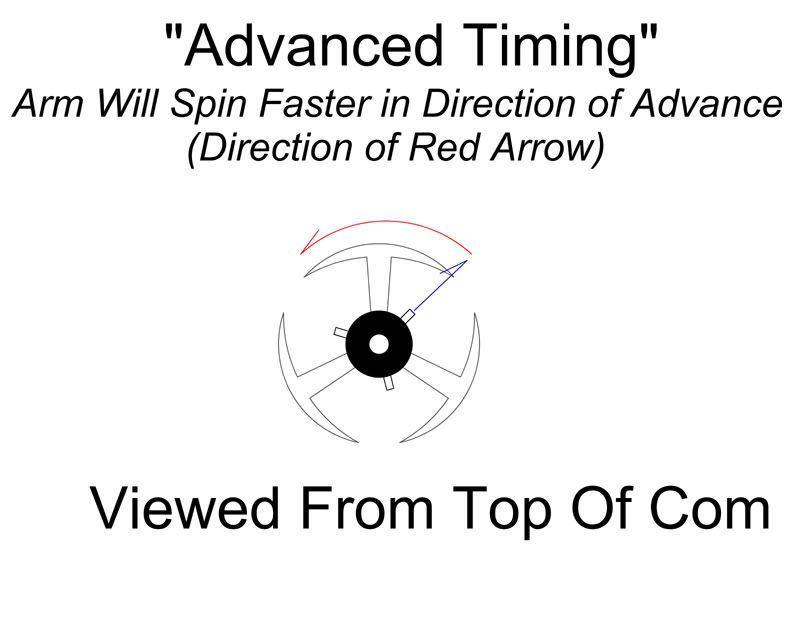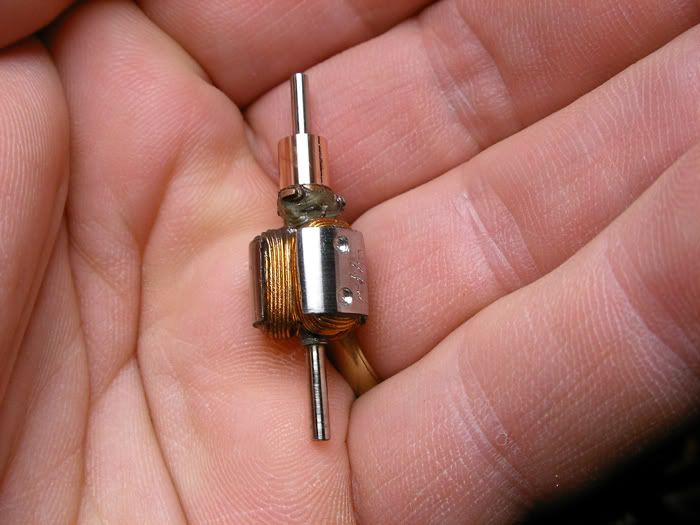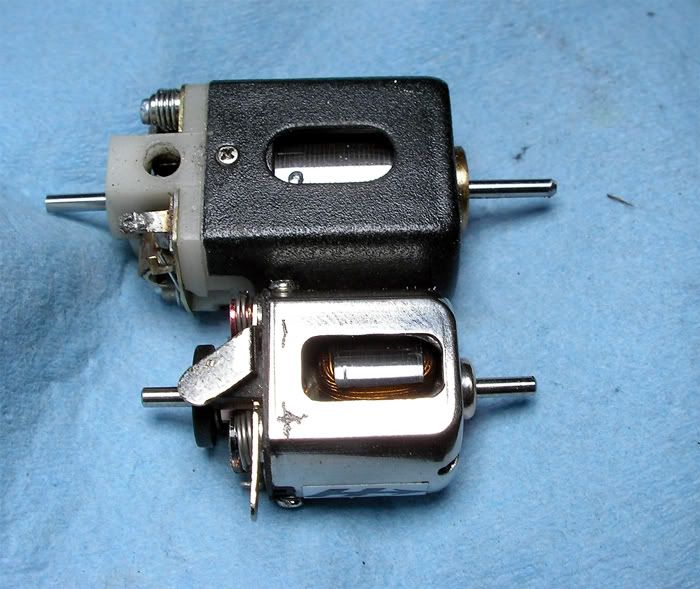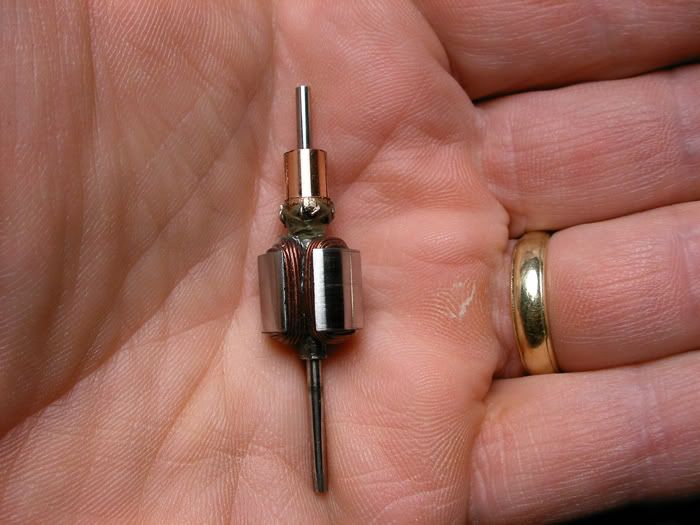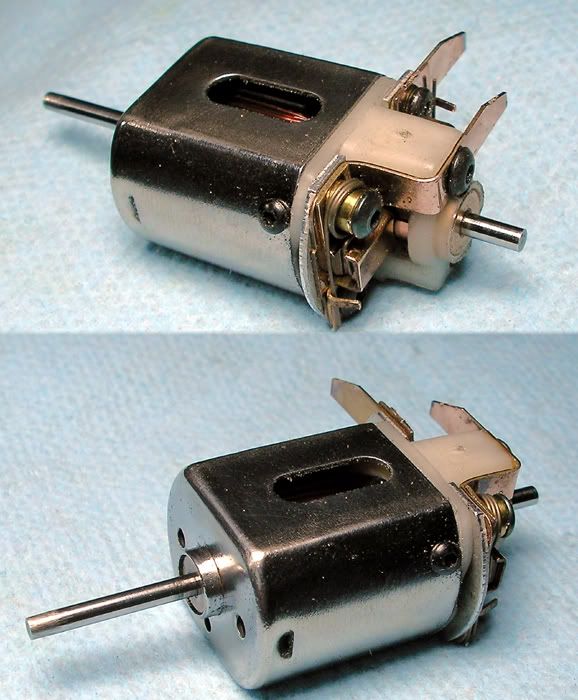John,
I know back in the thread somewhere you talked a little bit about how you brazed the stacks. Can you go into more detail on that? I have a couple of Bill's blanks and comms and would like to wind up something, but I'm concerned about how you go about brazing the comm connection.
Hi Gary,
This is something that is a little tricky and of course (risk-avoidance mode="on") I NEVER recommend that people do what I do. So here's the basic idea, instead of using "solder" which melts at a relatively low temperature, I use a brazing process. Brazing is basically just high-temperature soldering, but the filler metal melts at a much higher temperature. I use a jeweler's silver compound that comes in a syringe with a fine metal tip...the silver is powdered and suspended in a brazing flux. I bought one small syringe like those available here and there's enough in there for probably a thousand connections (?):
jeweler's silver paste You'll notice that it comes in different alloys labelled as "easy", "medium" and "hard". The "easy" stuff is what I use and it melts at over 1100 degrees F, plenty high enough to not have to worry about it, but safely below the melting point of brass. The other thing here is that silver is an excellent conductor of electricity, one of the best so it's well suited to electrical connections.
Now you need a power supply that can deliver beaucoup amperage at as low a voltage as you can manage (we're dealing with DC). The current will provide the "heat", the voltage really only serves to give you a spark and you don't need that here since we're not dealing with a "gap" as in arc-welding. Anyway, for a power source, I use a car-starter/battery charger. It's important to not get a regular battery charger since they won't necessarily be able to supply a lot of cranking amps. The one I got will do 55 amps @ 6V, because supplies that will do a bunch of amps at around 3V DC are expensive. The thing I got and is like this one but has the "Dayton" name (rebadged?) and is sold by Grainger:
Car Starter/Charger So now you need to be able to transfer all that current to a small spot...a commutator tab, as well as generate heat at that spot. I take the carbon core out of an old style zinc/carbon C-cell battery (
it's about the right size...D cell seems too large and I haven't tried a AA) and sharpen one end to a narrow/flat "chisel point". about the width of a com tab and maybe 1/16th tall. The carbon has a lot of resistance but will pass current, exactly what you need here since when the circuit is closed the carbon rod will get hot enough to fuse the jeweler's silver in a second or two. The first few times you use the carbon, it will "boil-off" any remaining goop from the battery it came out of and thereafter heat up cleanly. Still, once you get the carbon...clean it well with a strong solvent like acetone and let it dry thoroughly...heating it up for short bursts with the car starter to burn out any remaining solvent.
If there's still solvent in there when you heat it full out, it can crack, burst or even explode from the expanding solvent. For a straight tabbed com without the "hook", I shape a little groove right on the tip so it sits on the com tab without slipping off.
Next thing you need to do is be able to contact the carbon tip to the com tab and
only after that close the circuit so the carbon heats up when you are ready for it to. To handle that much potential current, I got a 50 amp boat ignition momentary switch and mounted it in a PVC box with two brass terminals coming from each side of the switch to the top. That switch can be tripped with your foot so your hands are free. The plus side of the car starter goes to one terminal of the switch box, the other terminal goes to a piece of heavy gauge stranded wire that will carry sufficient current and has a small "battery clamp" on it's other end to hold the carbon. So the complete path from the (+) terminal of the car starter goes through the switch (single pole momentary) to the carbon brazing tip. The negative side of the car starter goes to the com segment you're brazing and to prevent the clamp from marring the com, I just fashioned a round "strap" that I slip over the com and clamp the negative from the starter over that. It's important that the com, the strap and the com tab are clean and free of corrosion so they pass current well and that the brazing bonds well.
Those are the basic components...the power supply, the "heater" (carbon) and the silver brazing metal. I'm not too comfortable going into greater detail in case someone gets hurt doing this. If any or all of the above sounds dicey, I don 't recommend you go any further. A good high-temperature solder will work on winds that aren't too crazy. The above is for entertainment purposes only!
-john




 This topic is locked
This topic is locked





